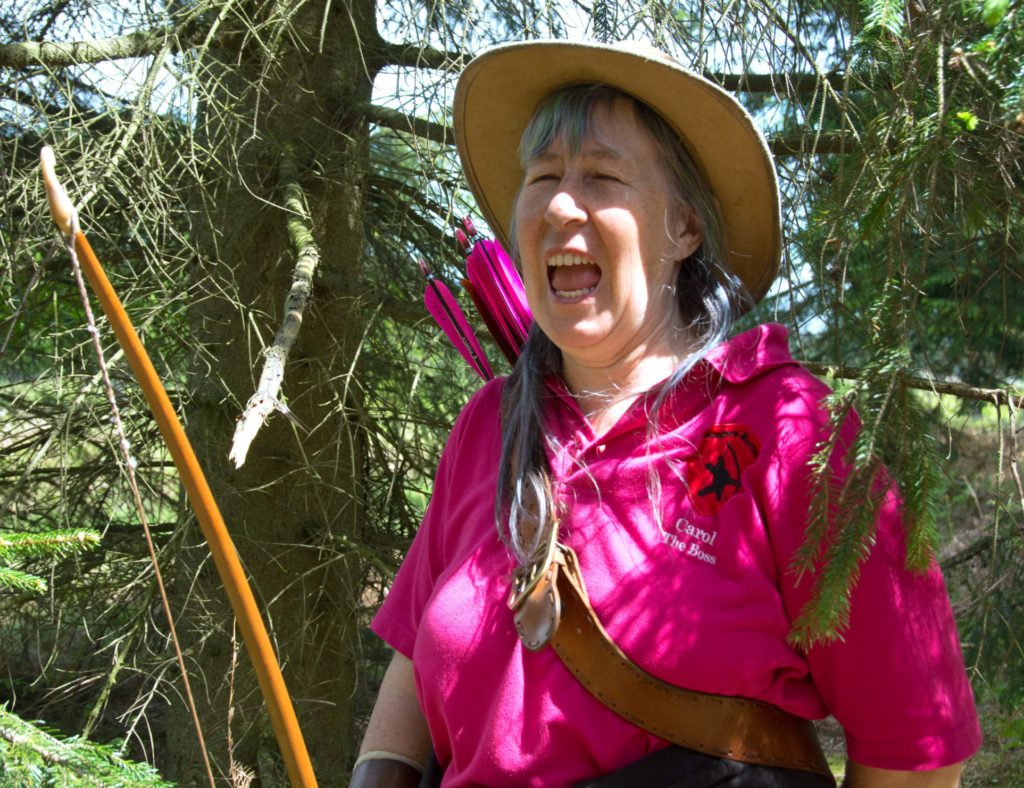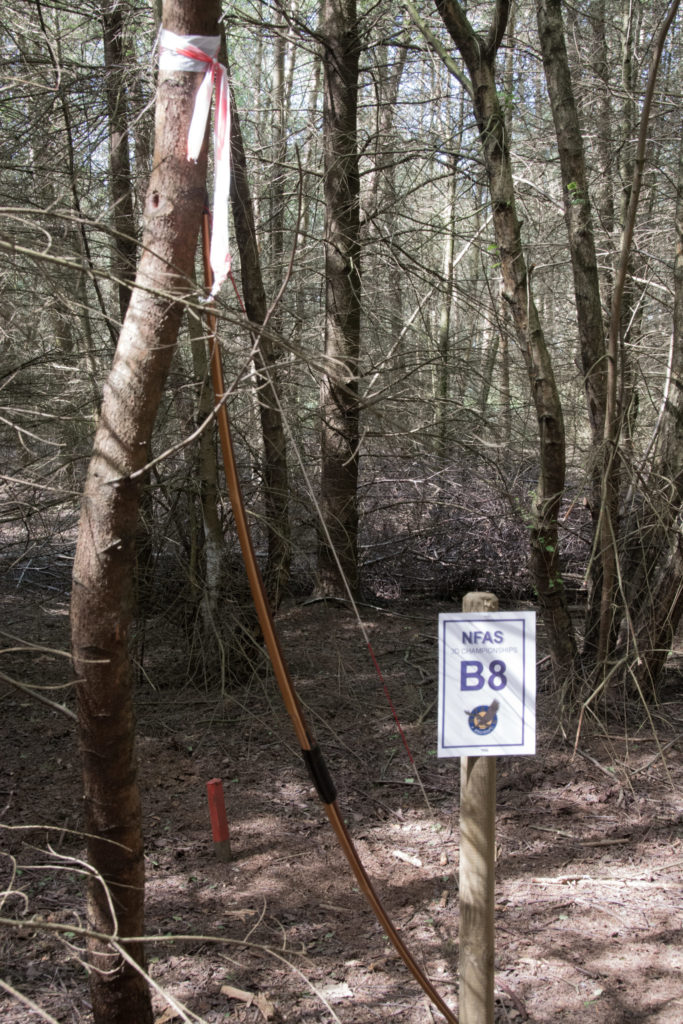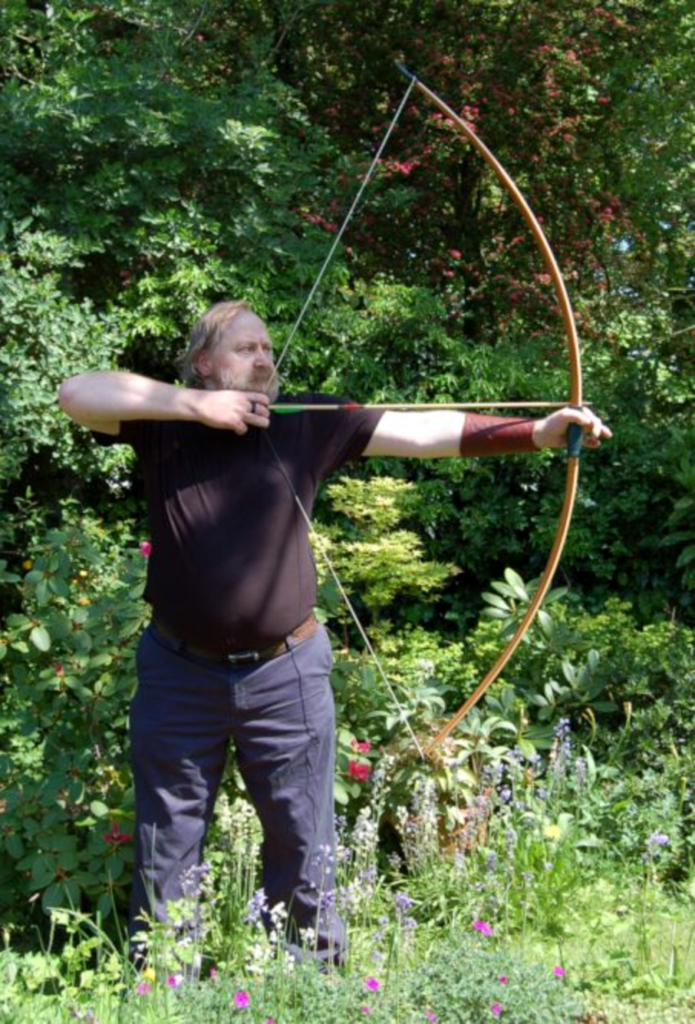Field is one of the finest arenas for longbow shooting. By Alex Tyler
From the first day of my beginner’s archery course, I wanted to shoot longbow. This wasn’t based upon anything rational – I had never even held a bow before, let alone a longbow – but while the beginner’s recurve I’d been given was doing a reasonable job of getting the arrows towards the target, it certainly wasn’t thrilling me. I bought my first longbow and felt like I’d come home.
To try and distil why shooting a longbow is special is difficult. For me, there are three factors. firstly, I love the simplicity: you have just a piece of wood and a piece of string. There is nothing sticking out, nothing to adjust and nothing to come loose.
Then there is the experience of shooting – with just a leather grip rather than a shaped handle, my longbow can find its own place to sit best in my hand and its slimness belies the power it can produce. When I shoot, the sound of the string makes a musical note rather than the twang of a compound or the rasp of a crossbow.
The third thing is the hardest to pin down because it’s a feeling, a sense of rightness. Part of this may be the idea of continuing a proud tradition of English archery but there is also a fairness: I am taking on the challenge of the field course with a bow that is only a few steps from the trees around me. Again, this doesn’t have a particularly rational basis, because my bow is made of woods that don’t grow in England and the deer I shoot don’t belong to the monarch and are made of rubber.
I have read some books on archery and never understand the part where it says ‘become the arrow’ (think of the headaches!) What I do know is that if I try to shoot my longbow when angry, the simple set-up takes on my tension and I miss. To shoot well, I have to relax and become simple myself, meaning I always leave a course with a smile on my face.
Another joy of longbow archery is the combination of competition and camaraderie at field shoots. I have been competing against Carol Pearce for a number of years; as well as securing 19 National Field Archery Society championship wins, she runs Carol Archery, teaching people how to shoot longbows.
I asked her what makes a longbow special: “When I first started shooting, I had a flatbow and hated it. Then I got a Ron Palmer longbow, D-section and 40lb, it was the lightest bow in the woods. I didn’t have to lug things around and sit down after every target. I had that bow for years and, shooting 9/32 arrows, I could reach 180 yards. It was only after injury I had to replace it with a lighter bow. Often when starting, people think they need a heavy poundage bow and find they can’t pull it back fully. My current bow is only 28lb and I can reach every target.
“I train a lot of people coming to longbow from other styles and I make sure I start them from scratch, because a longbow is a different animal. You have people who are used to compound holding on for far too long when part of the joy of shooting longbow is the instinctive element.
You also get people snap-shooting and getting down when they miss; it’s still important to have a consistent anchor point. I also stress the need to use either a Mediterranean or Flemish loose; trying to shoot three-fingers under and stringwalking puts unusual stresses onto the limbs and risks damaging the bow.
“One of the things that can really mess up a bow is when you string it. You should never use the step-through method as it has the potential to twist the limbs out of true. A bow stringer, another piece of string, makes the process simpler and safer. Everything should be done smoothly, from stringing to shooting: longbows don’t like being yanked. And one absolute no-no: don’t let anyone else draw your bow. If someone has a longer draw than yours, this could break the bow or damage it permanently.”
Call Carol Archery on 01932 865181 or visit: carolarchery.com
Maintaining longbows
All my bows have been made by Pip Bickerstaffe of Bickerstaffe Bows, so I asked him what he recommends to keep bows in peak condition.
“A bow is made of natural wood,” he said. “If you don’t treat it with respect, it will end up as firewood.
“The process starts before you shoot a bow for the first time. The bow needs to be part drawn and relaxed a number of times, gradually increasing the draw length to warm the wood internally. This process of warming up the bow needs to be repeated each time you take the bow out, otherwise the wood becomes stiff and brittle. A number of things can increase the risk of breakage, including shooting a longbow when the weather is cold. If it’s below 5ºC, I wouldn’t shoot because the temperature reduces the wood’s flexibility.
“Generally, longbows don’t need a lot of maintenance but benefit from being kept dry and the strings waxed on a regular basis. Inspecting the bow after each shoot for any cracks to varnish or damage to the horn nocks can help to spot potential breakages before they occur. If you wax the bow regularly with a beeswax-based furniture polish, this will put a film of wax on the bow preventing water from penetrating past the varnish. If you wax the bow once a week it can do no harm but the bow will be protected in wet weather.”
“There is no automatic lifespan for a longbow but, over time, the wood can develop a ‘set’, which will not lessen its power but will make it more consistent to shoot. When looked after, a bow can shoot well for decades, though, like any spring, may get a little softer over time.”
Contact Bickerstaffe Bows on 01509 673863 or visit: bickerstaffebows.co.uk




